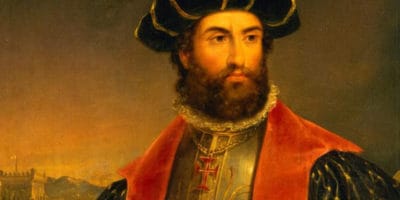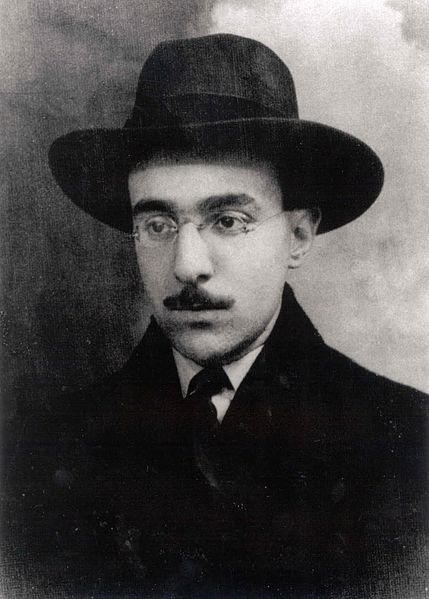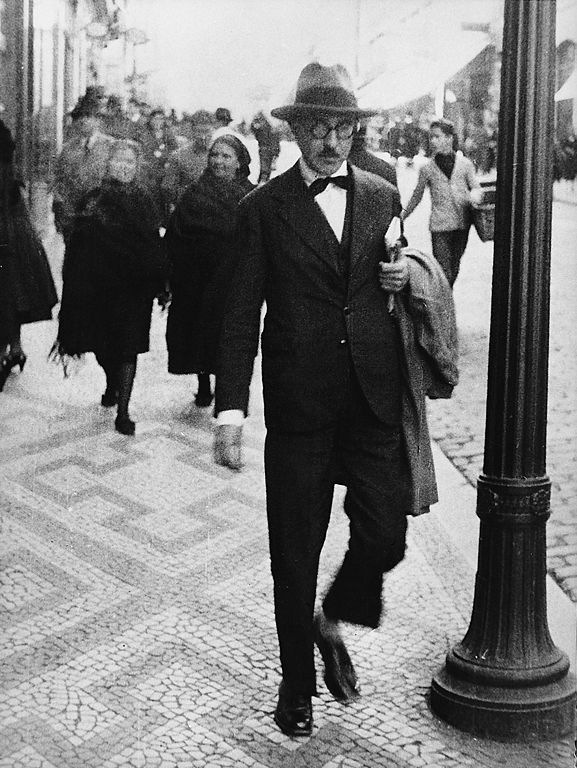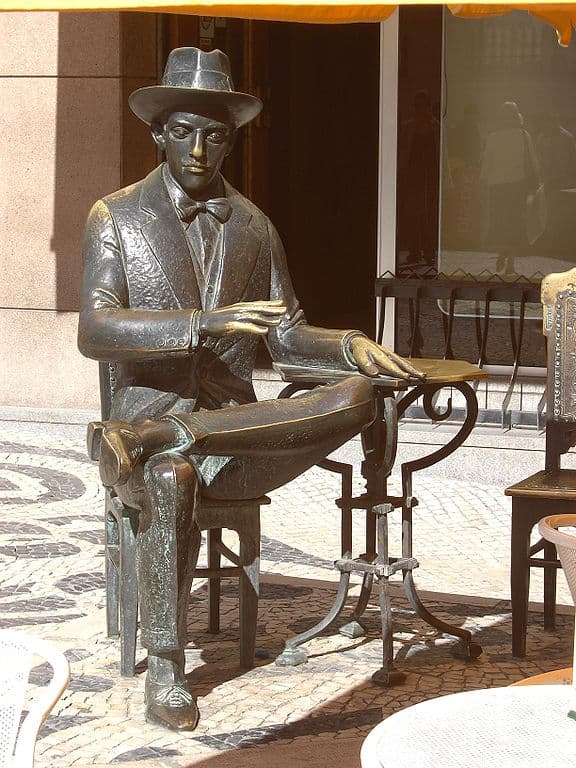All About the Elusive Fernando Pessoa
Portuguese poet Fernando Pessoa is probably most famous for putting Portuguese literature on the map internationally. He is also known for Modernist poetry, a literary movement that occurred in the early 20th century. Modernist poetry happens to be the subject of my thesis for my master’s degree, and after months and months of reading and researching, I’m well on my way to becoming an expert, I’m happy to say.
Pessoa’s name popped up many times in my hours of studying, and for good reason! Pessoa wrote under no less than 70 heteronyms or alternative personas, and each persona not only held a different name but also a different style of writing.
Keep reading to learn more about this Portuguese master of words, Fernando Pessoa.
Fernando Pessoa’s early life
Fernando Pessoa was born in 1888 in Lisbon. His father died when he was just 5 years old, and his mother quickly remarried thereafter. Pessoa’s new stepfather worked for the Portuguese consulate in Durban, South Africa, and from ages 7 until 17, the Pessoa lived with his family in Durban.
It was here, in South Africa, that Pessoa mastered the English language. Portuguese may have been his first language, but all in all, he only published one book of poems in his mother tongue.
When Pessoa was 13, he traveled back to Portugal and stayed there for one year before heading back to Durban. At 17, he left South Africa for good and began his studies at the University of Lisbon. He quickly decided that school was not for him, and dropped out after 8 months.
With more than enough time on his hands and support from various relatives, Pessoa focused solely on writing.
Life as a writer
When Pessoa dropped out of school, he quickly began working odd jobs such as translating, composing business letters, and writing reviews for avant-garde magazines. One magazine in particular, Orpheu, was at the head of the Modernist movement in Portugal.
The Modernist movement in literature can be best described as a moment in literature and art that occurred just after the First World War. Artists and writers felt jaded by the horrors they had witnessed (or had read about in the newspapers), and wanted first and foremost to give up the notion of Romanticism. According to Modernists, Romanticism was filled with clichés, and the Modernists wanted to create something new.
Pessoa had dreams of becoming a celebrated English poet, which is why he wrote the majority of his works in English. He began first in 1912 by writing criticism, then in 1913 and 1914, he began to write Modernist prose and poetry.
Although eventually in 1918 Pessoa published his first book of English poetry, Antinous, much if not all of his early work appeared in literary newspapers, magazines, and journals. But, by the end of 1918, Pessoa had Antinous and his second book, Sonnets, under his belt. In 1921, he released his third and final book of English poetry, aptly titled English Poems.
Pessoa published only one book of Portuguese poetry, Mensagem (Message in English) in 1933. He died just 2 years later from liver failure, relatively unknown in the literary world.
“Heteronyms” and Fernando Pessoa’s Legacy
Pessoa gave his entire life to his writing, giving up a normal existence in order to nurture what he called his “heteronymic project”. While it is quite common for writers to take up pseudonyms or pen-names, Pessoa took things to a whole new level.
Pessoa’s 3 main alter egos were Alberto Caeiro, Ricardo Reis, and Álvaro de Campos, respectively. Not only did each of the alter egos have very different writing styles, they each had different background stories, and also “communicated” with one another through literary reviews and other magazines that Pessoa wrote for.
Alberto Caeiro was an uneducated poet who lived in the countryside and mastered free verse. Ricardo Reis was a doctor inspired by the works of Horace and produced emotional ode poetry. Álvaro de Campos was a bisexual naval engineer living in London who admired Walt Whitman. In comparing the three, Pessoa once wrote:
“Caeiro has one discipline: things must be felt as they are. Ricardo Reis has another kind of discipline: things must be felt, not only as they are, but also so as to fall in with a certain ideal of classic measure and rule. In Álvaro de Campos things must simply be felt.”
All in all, Pessoa has claimed that at least 72 published author’s names were of his own creation.
One of Pessoa’s greatest masterpieces was published after his death. The Book of Disquiet is one of the rare instances in which Pessoa wrote in Portuguese. The book is credited to one of Pessoa’s heteronyms, Bernardo Soares, and is introduced by Pessoa himself as a “factless autobiography.”
Because the book was published from the unfinished notes of Pessoa nearly 47 years after his death, some critics argue that it is not arranged as the author would have seen fit. Regardless, the book has been translated into 5 different languages, including English, and is a bestseller.
Something that I found interesting about The Book of Disquiet, is that in the book there is scene where the main character, Soares, sees Pessoa himself and describes him to the readers. He writes:
“Fairly tall and thin, he must have been about thirty years old. He hunched over terribly when sitting down but less so standing up, and he dressed with a carelessness that wasn’t entirely careless. In his pale, uninteresting face there was a look of suffering that didn’t add any interest, and it was difficult to say just what kind of suffering this look suggested. It seemed to suggest various kinds: hardships, anxieties, and the suffering born of the indifference that comes from having already suffered a lot.”
Today, in tribute of Pessoa, there is a statue of the writer, hunched down over a coffee table as he is described above. Visit the statue for yourself at the Cafe A Brasileira in Lisbon and pay homage to the writer for yourselves!
R. Garrett 122, 1200-273 Lisboa, Portugal
Conclusion
I hope I have inspired you to head out to your local bookstore to try to find some of Fernando Pessoa’s (or one of his alter ego’s) works! I know I’m always on the hunt for an interesting writer to learn more about, so I hoped I’ve sparked your curiosity.
If you’re in Lisbon and want to learn more about the city and the famous people that have lived there, why not go on a walking tour with us? Click here to learn more!
Planning a trip to Paris ? Get ready !
These are Amazon’s best-selling travel products that you may need for coming to Paris.
Bookstore
- The best travel book : Rick Steves – Paris 2023 – Learn more here
- Fodor’s Paris 2024 – Learn more here
Travel Gear
- Venture Pal Lightweight Backpack – Learn more here
- Samsonite Winfield 2 28″ Luggage – Learn more here
- Swig Savvy’s Stainless Steel Insulated Water Bottle – Learn more here
Check Amazon’s best-seller list for the most popular travel accessories. We sometimes read this list just to find out what new travel products people are buying.














